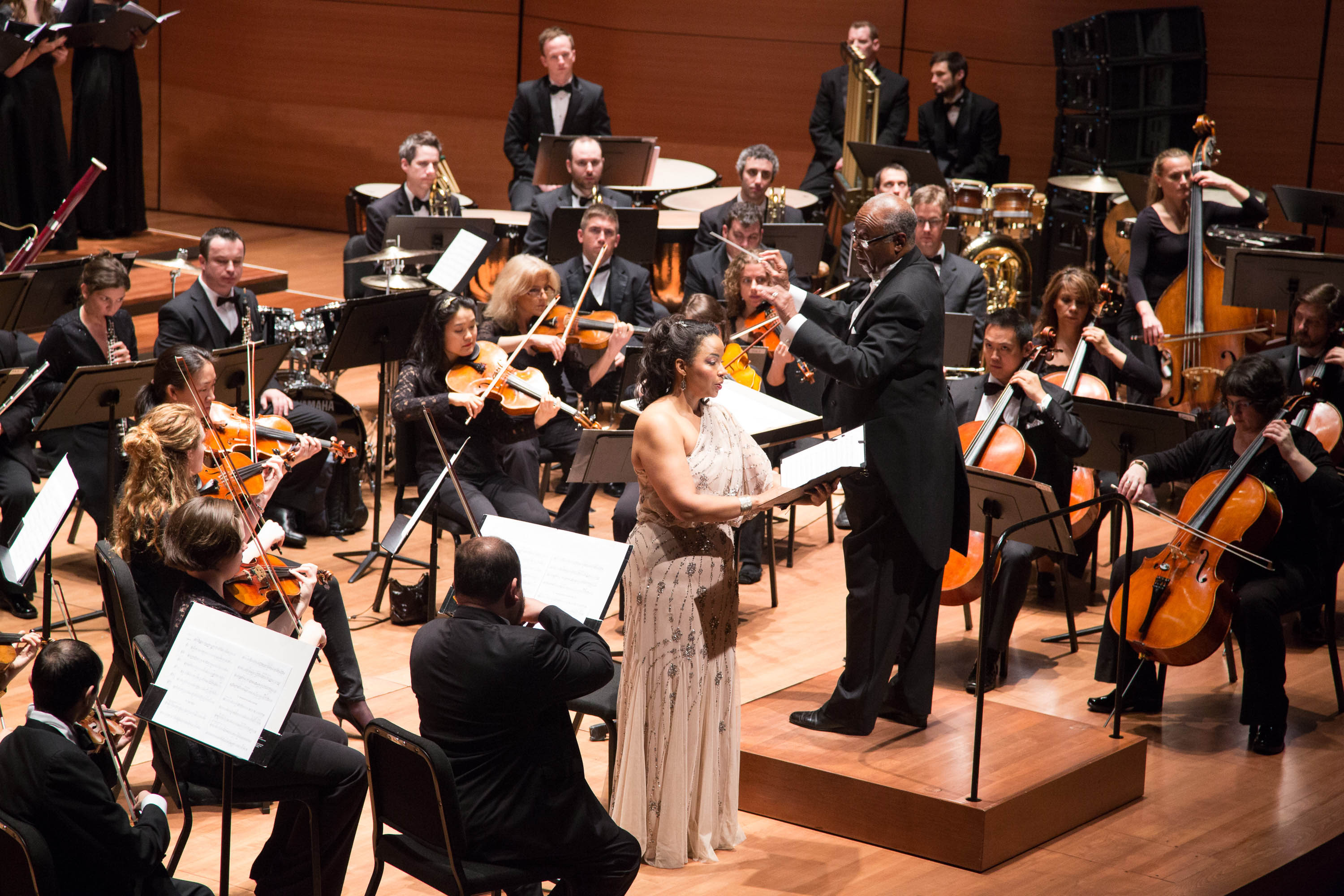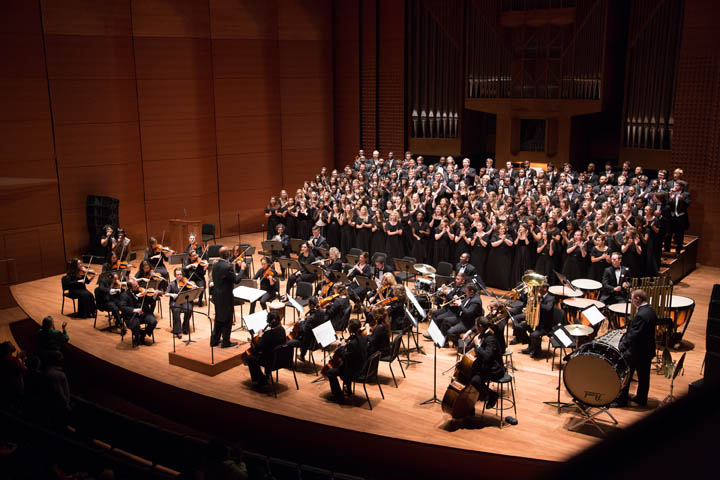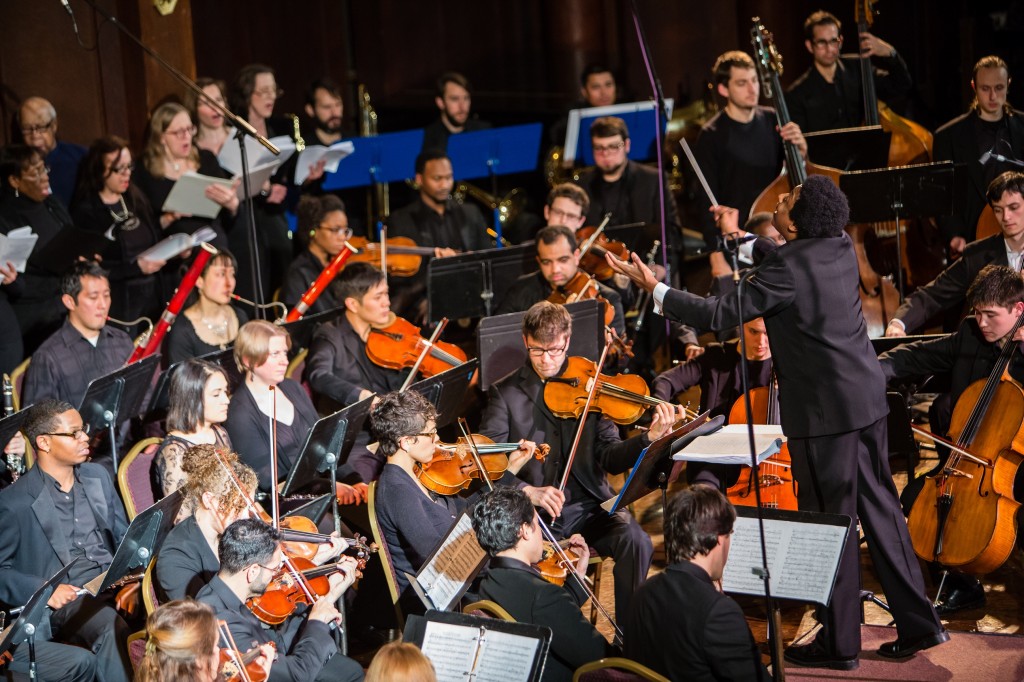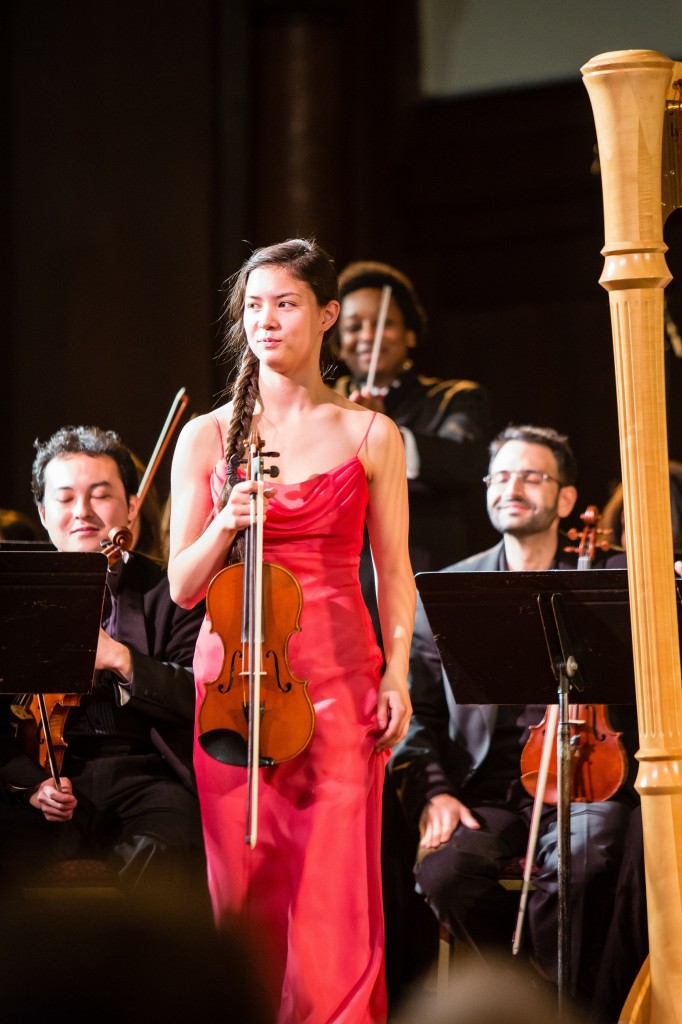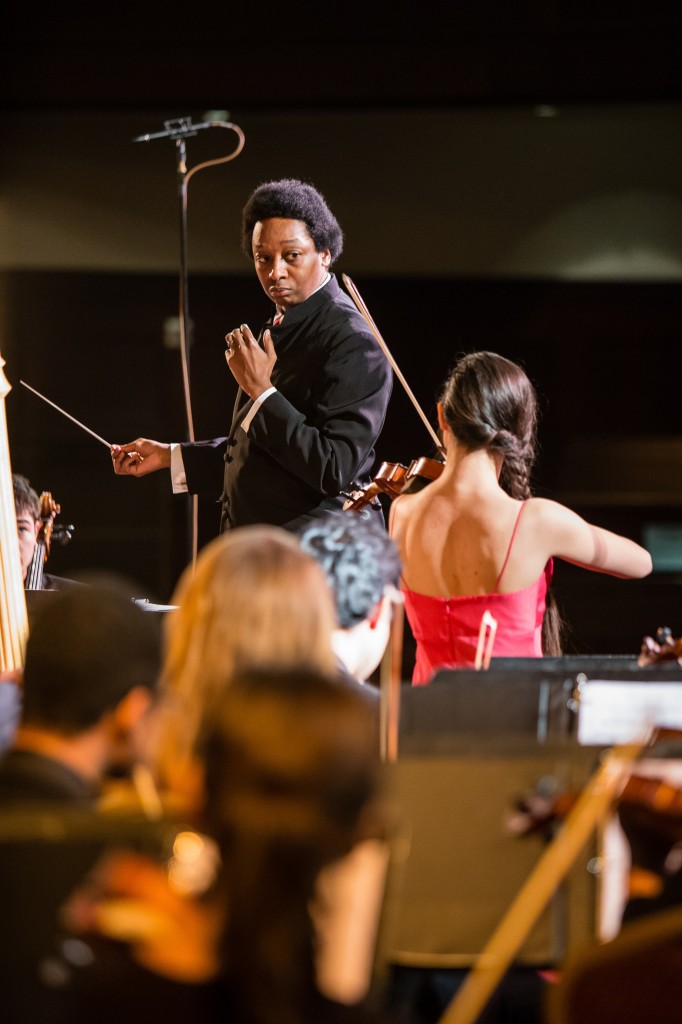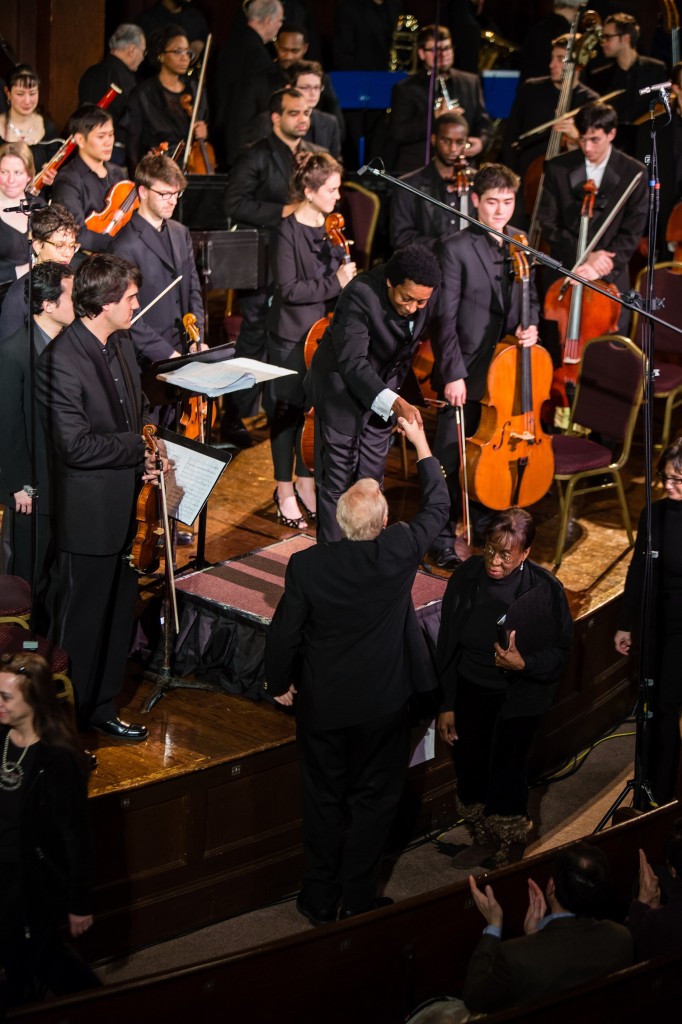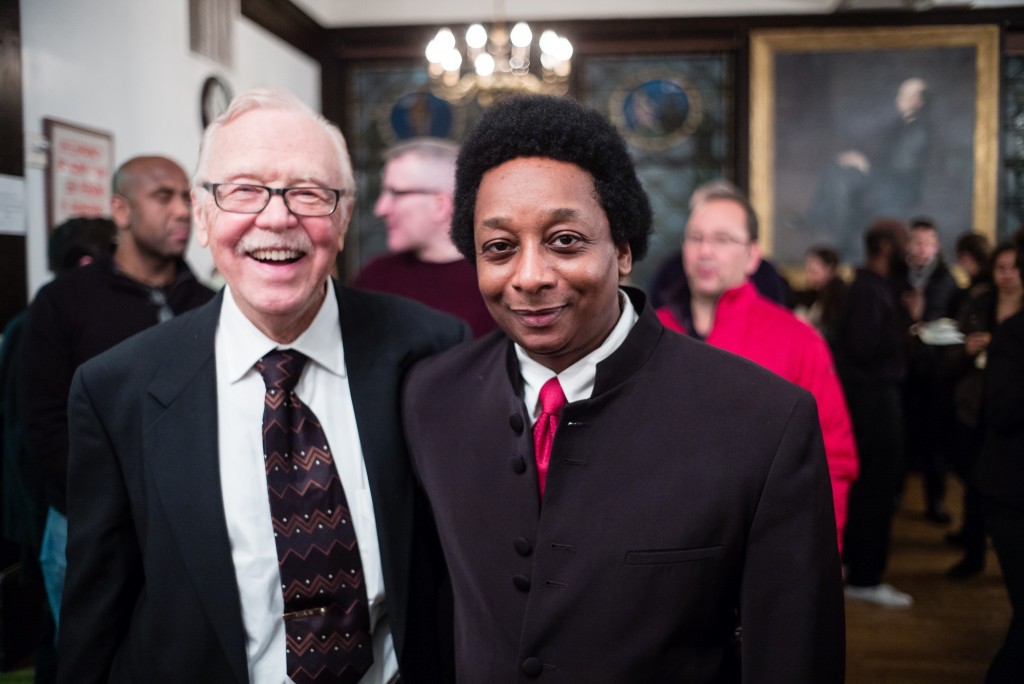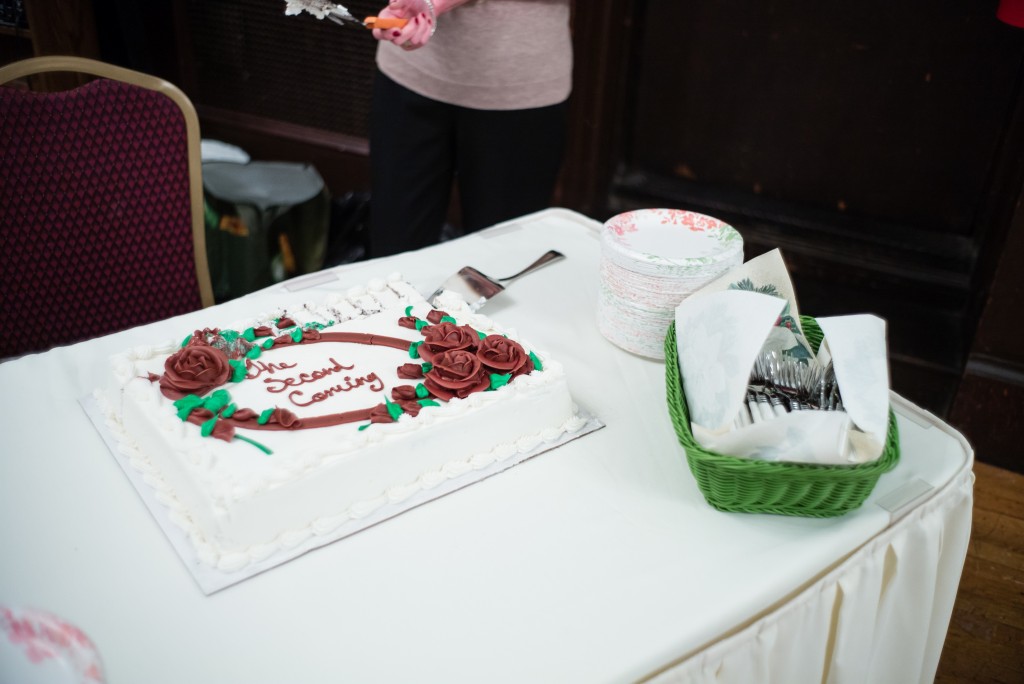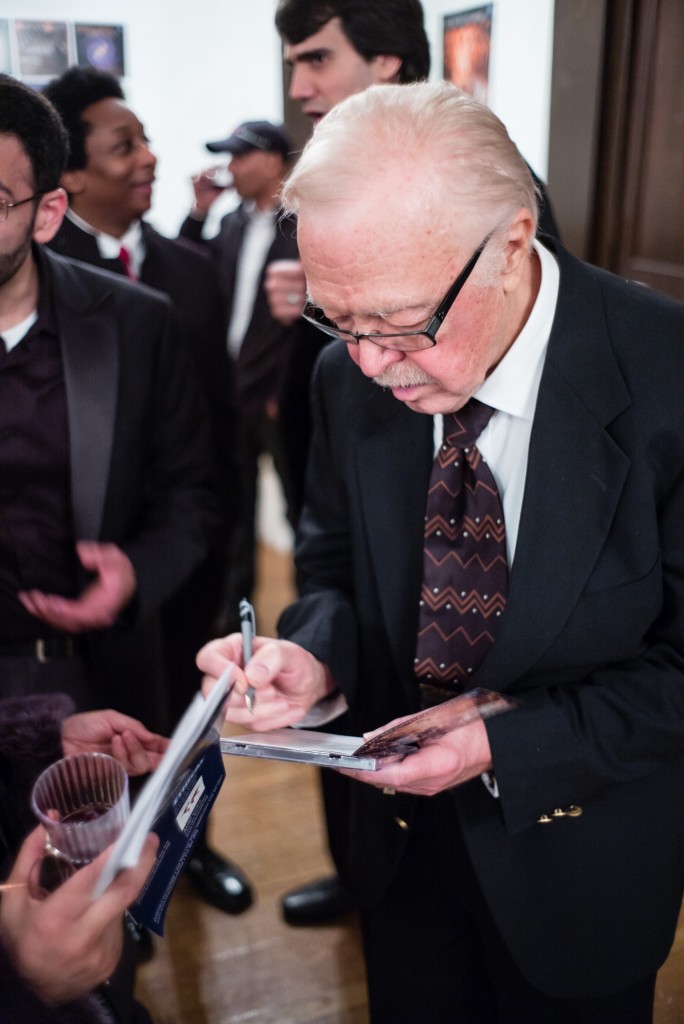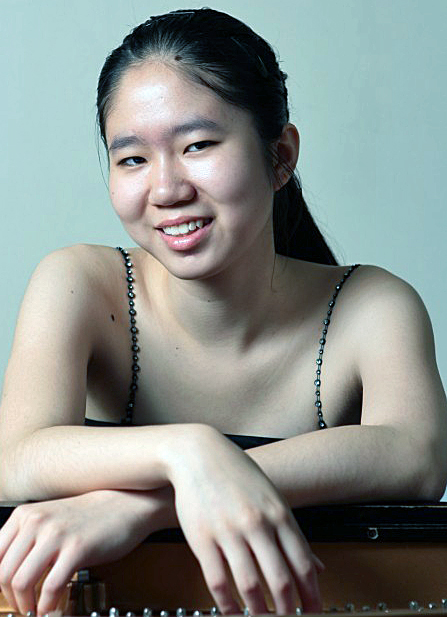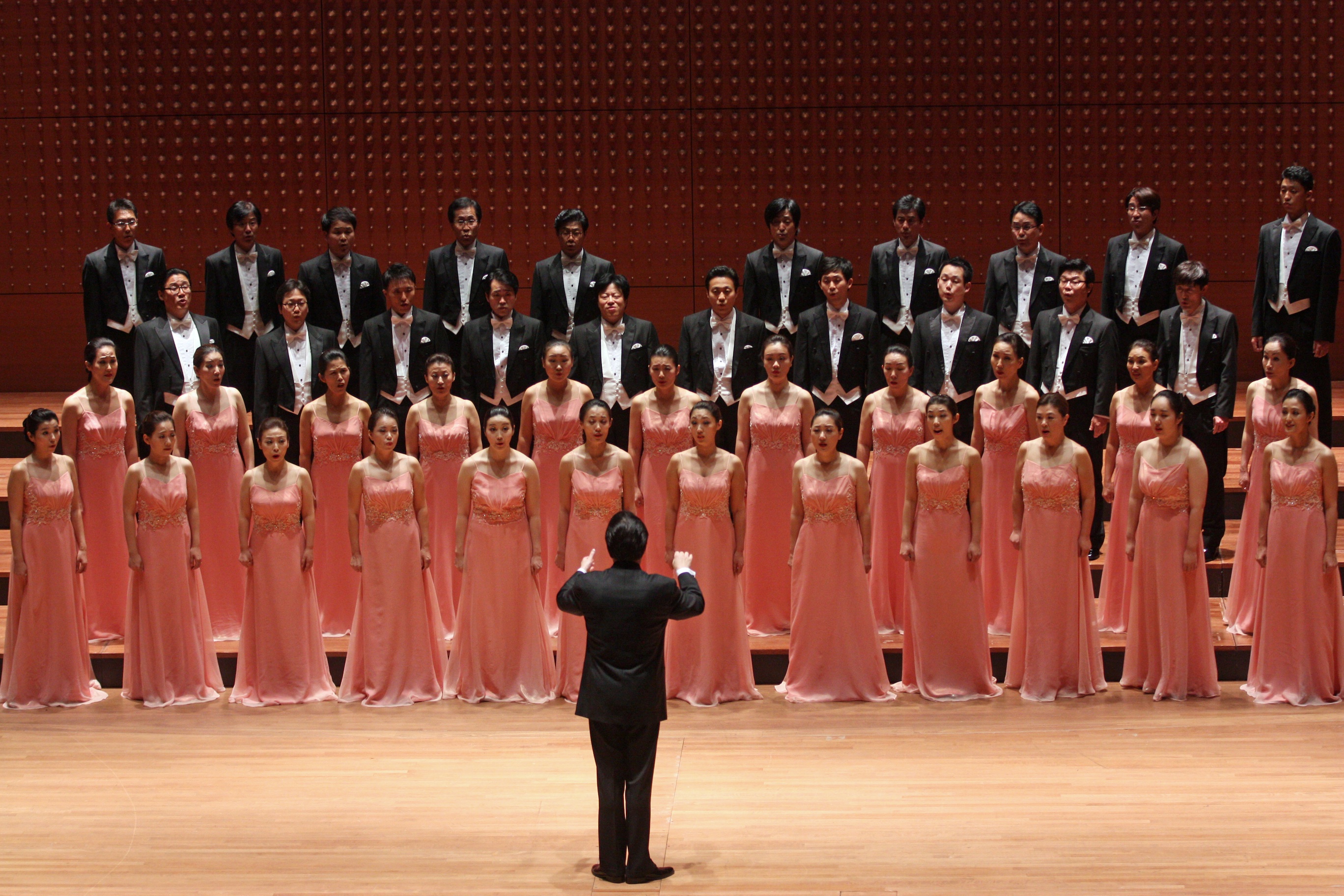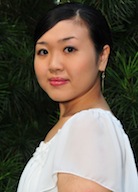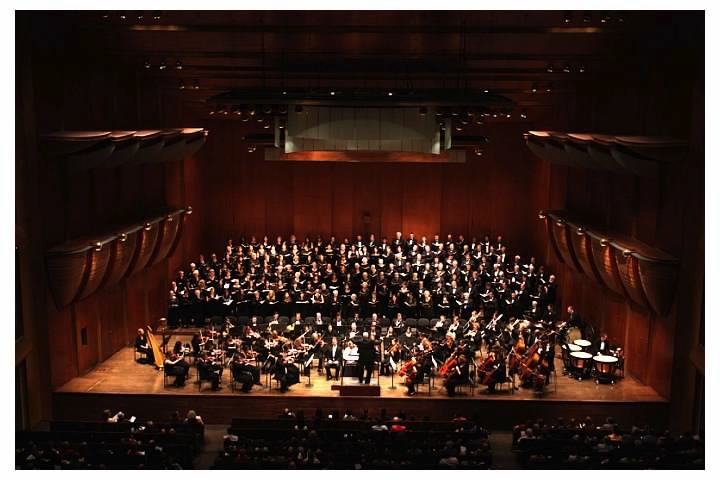Distinguished Concerts International New York (DCINY) presented a concert of works by prominent African-American composers and scholars Robert Harris and Rosephanye Powell in a program entitled “The Cry of Jeremiah,” at Alice Tully Hall at Lincoln Center on May 10, 2014. Mr. Powell was to conduct the New York premiere of his Gloria. The Cry of Jeremiah (also a New York premiere)was to feature the composer, Ms. Powell as the narrator, with her husband William Powell conducting. With approximately two hundred and fifty singers from Alabama, Illinois, Florida, North Carolina, South Dakota, the Bahamas, and “individuals from around the globe,” it was the tried-and true DCINY formula: Bring together talented musicians and let the magic unfold. This performance was no exception.
Opening the concert was the Gloria. It is a five-movement work scored for chorus, soprano soloist, and orchestra. The movements are Gloria in excelsis Deo, Laudamas Te, Domine Deus, Qui tollis, and Quoniam tu solus sanctus. As is stated in the notes, any of these movements could be performed independently. Often this modular approach leads to some unevenness, but the five movements mesh together well. Gloria is a work filled with brilliance and poignancy. Gloria in excelsis Deo is strongly reminiscent of the opening movement of John Rutter’s Gloria in both the brass and vocal writing. Soprano soloist Heather Hill was exceptional in her role in the Domine Deus and Quomium tu solus sanctus movements. Her upper register was crystalline in its clarity and beauty, with an exquisitely controlled vibrato that was perfect for this work. This listener found the Qui tollis to be particularly compelling both harmonically and stylistically. The bold final movement dies away to a quiet ending with the word Amen delivered almost in a whisper. Mr. Harris is a no-nonsense conductor, who led with understated restraint.It was a performance of which the chorus, orchestra, and soloist could be proud.
The Cry of Jeremiah tells the story of the prophet Jeremiah’s struggles as he is abused and imprisoned for his prophecies. This four-movement work is scored for narrator, chorus, organ, and orchestra, and freely uses the 20th chapter of the book of Jeremiah for the text. Those movements (and corresponding verses) are entitled Is Not His Word Like a Fire (Jeremiah 20:9), O Lord, You Have Deceived Me (Jeremiah 20:7-9), Cursed Be the Day (Jeremiah 20: 14-18),and Hallelujah! (Jeremiah 20:11-13).Each movement opens with the narrator speaking as Jeremiah before the chorus and orchestra enter.
As well as being an accomplished composer, Ms. Powell is an exceptional orator. She became Jeremiah as the words came forth with raw emotion. Those words were at turns despairing, raging, and finally, exultant. The power of her oratory was spellbinding, deepening the meaning of the music that followed. One wonders, with the narration so inextricably bound to the music, whether a less passionate narrator (or omitting the narration) might possibly nullify the power of the music, but such is the case with many similar compositions. In any case, this work most likely was written with a very specific audience in mind, and while it is an effective work for the concert stage, it is an emotionally supercharged work that would enjoy great success in performances at churches or houses of worship.
The music of The Cry of Jeremiah is eclectic. There is Baroque-influenced contrapuntal writing mingling with jazz harmonies and rhythms, and African-American spiritual/gospel vocal styles. Combined with the narration, this is a theatrical work that demands not just to be heard, but to be experienced in all its glory. Conductor William Powell led the Distinguished Concerts Orchestra and chorus with the quiet strength and confidence of one who is in full command. The chorus radiated the emotions of the spoken words with equally passionate ensemble singing. The audience was so taken by this work that they greeted the end of each movement with enthusiastic applause, in spite of the request in the program to hold all applause until the end of the final movement.
When soprano Brandy Woods came to the front of the stage in the Hallelujah! and unleashed a improvisatory solo while the chorus swayed and clapped in a frenzied joy, it brought the already excited audience to a fever pitch. When the last note was sounded the audience sprang up as one in a thunderous ovation, saving the greatest appreciation for Ms. Powell, who was the star of the evening. Ms. Powell joined Ms. Woods in a jubilant gospel-style improvisation as the chorus encored the last section of the Hallelujah. The audience clapped and swayed along to bring the evening to a triumphant close.

